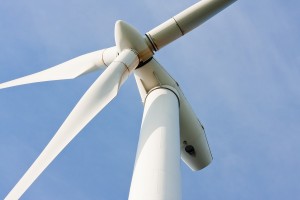 Wind energy development is complex and selecting the optimal wind turbine technology is critical. The process requires careful evaluation of numerous factors, and, unfortunately, many wind farm owners make the same mistakes during the selection process.
Wind energy development is complex and selecting the optimal wind turbine technology is critical. The process requires careful evaluation of numerous factors, and, unfortunately, many wind farm owners make the same mistakes during the selection process.
What should you know when evaluating wind turbine technology for your wind farm? The key factor is that not all wind turbines are created equal. They vary in size, performance, cost, reliability and even appearance.
Here are three common mistakes that occur when selecting wind turbine technology, and some considerations that can help make your choice a successful one.
Overvaluing Capacity Factor
Capacity factor can be a misleading statistic. Consider that in a given layout, it is not uncommon to observe a capacity factor differential of up to 10 percent between competing turbine models. Does this mean that the less efficient machine is also less attractive? Not necessarily. It’s possible the less efficient turbine has double the capacity (e.g., 3.0 MW versus 1.5 MW). Despite the 10-point disparity in capacity factor, the larger machine may actually produce twice the energy. Recognizing that balance-of-plant construction costs are generally not linear and that it doesn’t necessarily cost twice as much to build the 3.0-MW turbine, the needle often tends to move toward the bigger machine, particularly in larger wind farms.
As part of any successful turbine selection strategy, capacity factor should be limited to a financial modeling input. Consideration of this metric in any greater light may result in a highly efficient yet under-performing project.
Bid Normalization
While capacity factor may be the most mistakenly relied upon metric during turbine selection, perhaps none can be more detrimental to the bottom line than a failure to appropriately normalize bids. When soliciting and reviewing turbine supply proposals, the first step should always be to identify the differences in scope. Think of it in terms of the old adage "comparing apples to apples." Differences in scope may range from things like equipment supply (is the turbine furnished with an internal transformer or will it require an owner-supplied pad-mount?) to service offerings (is the supplier installing tower cabling or is the owner’s contractor required to do it?).
Regardless of the differences or subtleties, bid prices should always be adjusted at the onset of any successful turbine evaluation. Failure to do so may lead to selection of a suboptimal machine for your project, adversely impacting the long-term financial and operational performance of the project.
Service Versus Supply
While the cost of service proposals – generally $35,000 to $50,000 per turbine per year – seems almost negligible when compared to the turbine price, its impact can be substantial.
Nearly every turbine supplier will require the use of their O&M services throughout the turbine warranty period. Not only should this requirement be treated as an intrinsic cost of turbine selection, but it’s also important to consider all aspects of the proposal. As part of the process, be sure and ask questions like:
- Does the proposal include both planned and unplanned maintenance?
- Who pays for the crane if required for repairs?
- Are spare parts required to be purchased upfront or at the end of the contract?
- Is my availability guarantee covered by the service agreement, and if so, does that lower the potential limit of liability?
There you have it. Three common mistakes in wind turbine technology selection and how to avoid them. By asking these questions as part of optimal turbine selection process, you can ensure the purchase of the right piece of equipment for your wind farm project and can also potentially save millions in unplanned expenses over the life of the contract. Picking the right machine goes well beyond a familiar name or the lowest price--it requires recognition and consideration of the countless dynamics involved with the single most important asset at a wind farm. Anything less is risk without reward.
Interested in learning more about wind turbine technology? I’ll be presenting at the Renewable Energy World North America conference in Orlando on December 12. Even if you can’t make the presentation, stop by booth #2319 and say hi!
Aaron Anderson is a Mechanical Engineer and Project Manager in Burns & McDonnell's Renewable Energy Group. Aaron specializes in financial and engineering analyses of renewable and alternative energy projects, including contractual negotiations, project development, asset due diligence assessments, technology evaluations, resource and energy assessments, wind farm design and project economic and strategy evaluations. Aaron has directly supported more than 20 GW of power generation projects, including more than 12 GW of wind energy development.
